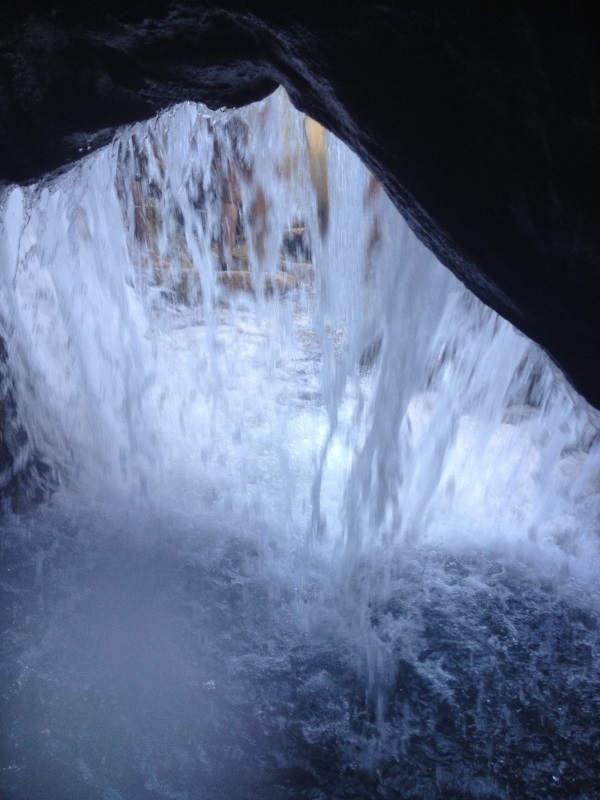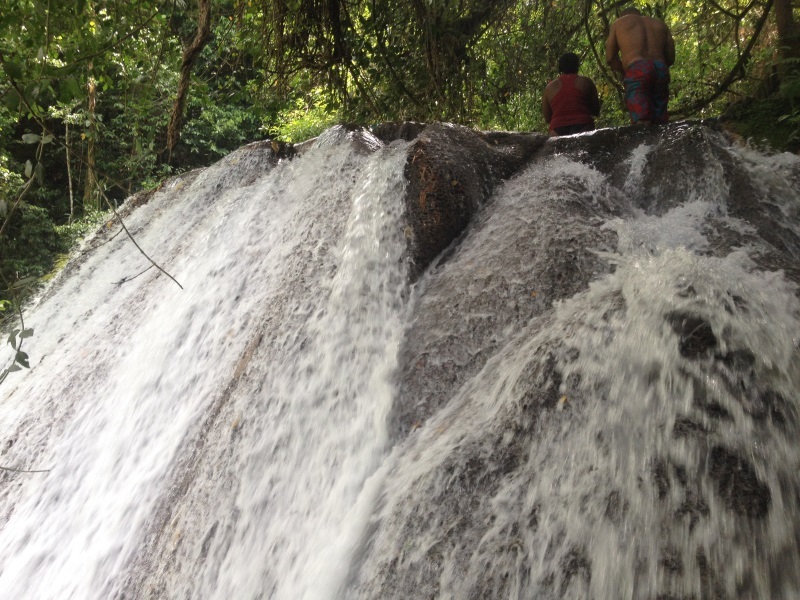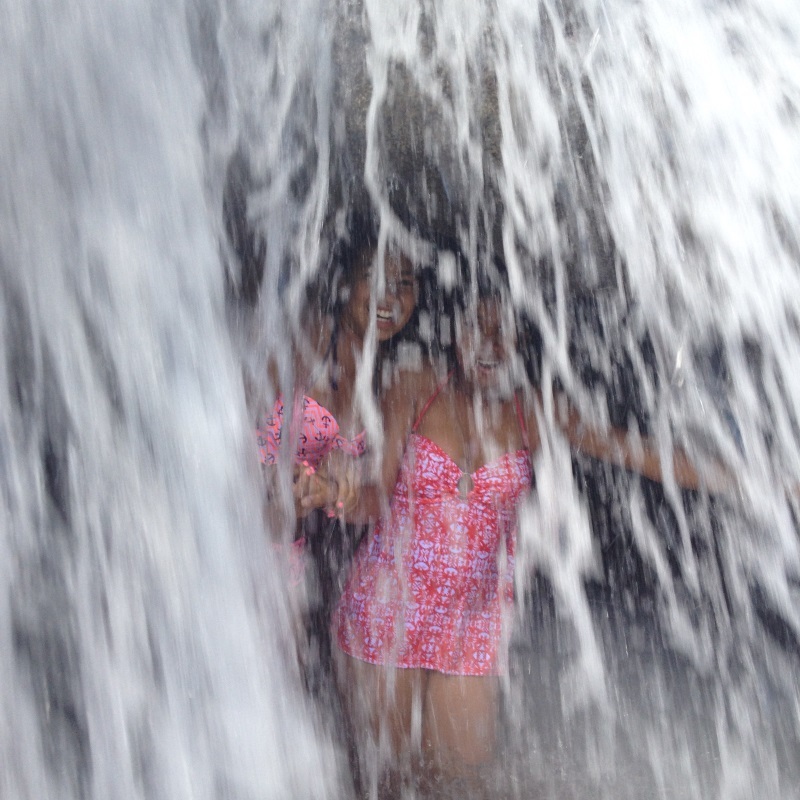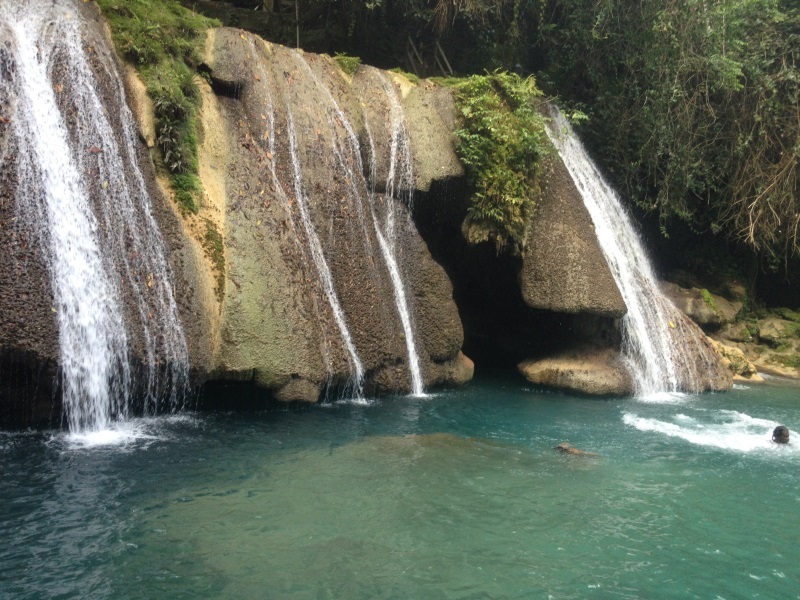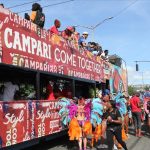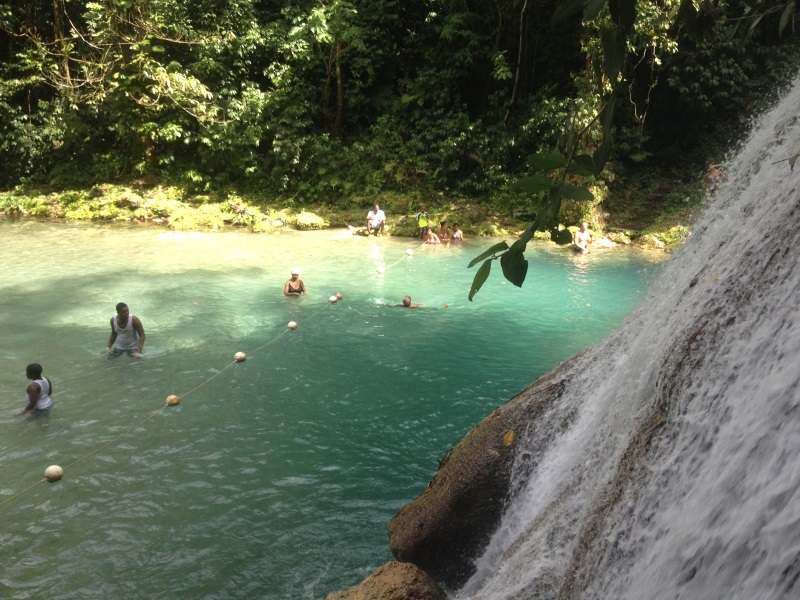
Port Antonio is located on the northeast coast of Jamaica. It is the third largest port on the island and is well known as the shipping point for coconuts and bananas. Situated as it is among legendary lagoons, fabulous beaches, and dramatic mountain scenery, Port Antonio has much to offer its visitors.
Day 1 – Port Antonio, Trident Castle, Folly Ruins, Frenchman’s Cove, Blue Lagoon, Boston Bay, Reach Falls
Your first day in Port Antonio should focus on exploring the city itself. Begin with Market Square to get the flavor of its Victorian and Georgian architecture. Be sure to visit the Victorian Clock Tower and the Musgrave Market where you can buy fruits and vegetables as well as a variety of local crafts. A stop at the Errol Flynn Marina, named for the Hollywood film star who became so enchanted with the spot when his yacht ran aground here that he bought a nearby island and other properties, could gain you a glimpse of a celebrity strolling along the beach front promenade.
Fort George on the Titchfield Peninsula is well worth seeing. Built in 1729, the fort was to provide protection from foreign invasions and local uprisings. The city also boasts several historic churches. In the East Harbor area you can view what is left of the Folly Mansion. Built in 1905 by Alfred Mitchell, a retired mining engineer, it had 60 rooms on two floors and was equipped with a wind-powered generator for pumping seawater into an indoor swimming pool. Mitchell kept monkeys at the property, brought to Jamaica by his son-in-law. The monkeys were subsequently placed on a nearby island, appropriately renamed Monkey Island. The mansion has fallen into disrepair over the years but its ruins continue to fascinate visitors.
Further explorations of the city will bring you to Trident Castle, a luxury hotel and fairytale-like environment that can be rented for weekend getaways. A little further down the coast is Fisherman’s Cove, one of the best beaches in the area, and the famous Blue Lagoon.
Moving along Fairy Hill will take you to Boston Bay where you can sample the island’s famous jerk chicken and pork, roasted on pimento leaves in an outdoor pit. If you’re still feeling adventurous after your meal, considering wading in the waters of Reach Falls before returning to the city.
Day 2 – Rio Grande, Ocho Rios, Dunn’s Falls
The second day of the itinerary will see you spending considerable time in the water, so be prepared. First off is a stop at the Rio Grande, east of Port Antonio on the way to Ocho Rios. At Rio Grande you can go rafting across the river. At the traditional fishing town of Hope Bay you can enjoy local jerk cuisine, while a little further along the route, you’ll visit Buff Bay, the site of a weekly farmers’ market featuring produce from the Blue Mountain region. In the town, a visit to St. George Anglican Church, built in 1814, is in order.
Stopping briefly in Ocho Rios for a taste of dining at Island Village and a visit to the Reggae Explosion museum to learn about all things reggae, you will then travel to the day’s main attraction: Dunn’s Falls. This area features a relaxing beach, a chance to climb the unique waterfall and the series of terraces it covers as it moves toward the beach. The site offers all the amenities visitors may desire: restaurants, faces, and the all-important restrooms! After your adventures here, you’ll be ready to return to Port Antonio proper to get some rest.
Day 3 – Blue Mountains, Charles Town
Traveling inland on the third day, you will visit the Blue Mountains. Travel up to Buff Bay and then take the B1, g are all recommended in this unique Jamaican environment. You have the choice of taking a guided tour or wandering around by yourself. Energetic visitors may decide to climb the highest mountain on the island and stand on Blue Mountain Peak. Your mountain adventure will take you isolated village which will take you into the mountain region where you can view rare birds and exotic animals. Hiking, biking, and walking, plantations that produce the famous Blue Mountain coffee, and working farms.
On the return trip, make a stop in Charles Town, which began as a Maroon colony of former slaves. The history of the Maroons is one of the most fascinating cultural stories in Jamaica. The Maroons were brought to Jamaica to work as slaves to the Spanish but escaped to the mountains and fought both the Spanish and British for their freedom. Even today, Maroon settlements are communally owned and self-governing. The Charles Town Museum tour features traditional Maroon drumming and dancing, as well as a display of artifacts illustrating the lives of those long-ago runaway slaves.

